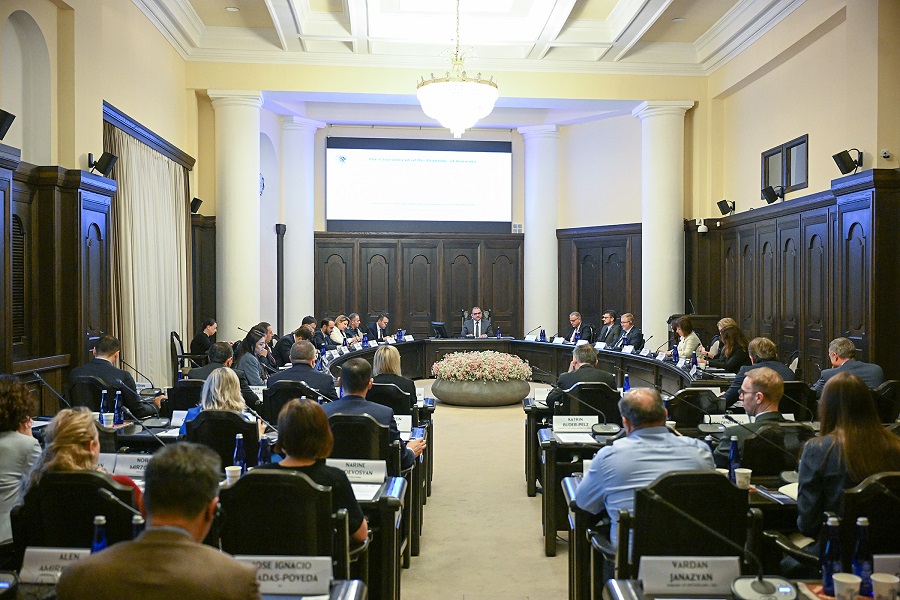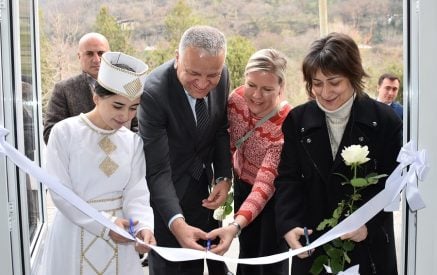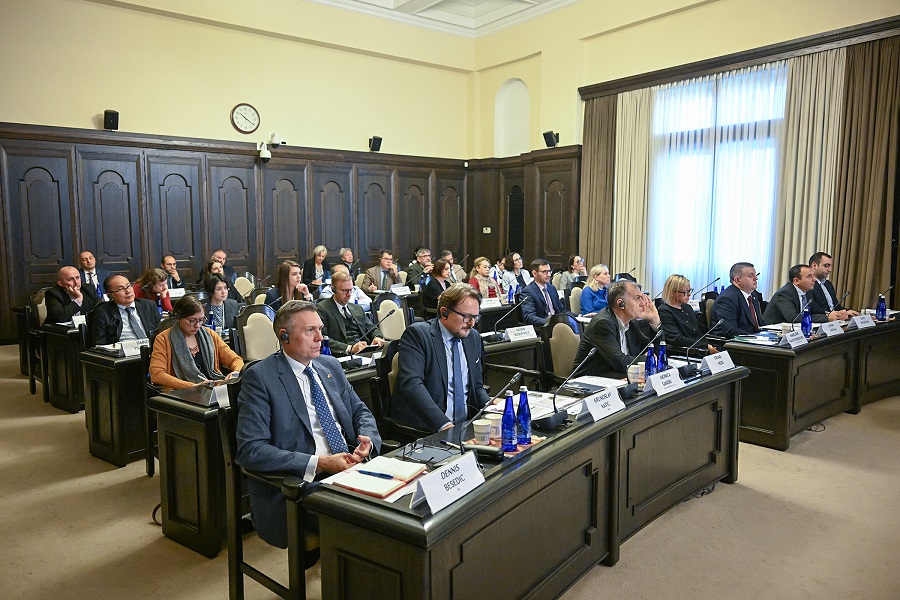Post Disaster Needs Assessment In the Focus of Fifth GREEN Armenia Platform Policy Dialogue
YEREVAN, 22 November 2024 – The fifth in the series of policy dialogues of the GREEN Armenia (Growth and Recovery to Empower, Equip and Nurture Armenia) platform took place today, with the participation of Tigran Khachatryan, Deputy Prime Minister of Armenia, Natia Natsvlishvili, Resident Representative of the United Nations Development Programme (UNDP) in Armenia, Ambassador Vassilis Maragos, Head of the European Union (EU) Delegation to Armenia, and Carolin Geginat, Country Manager of the World Bank (WB) for Armenia. Representatives of the line ministries and development organizations were also present.
The primary focus of the meeting was to address the aftermath of the devastating floods that hit the Lori and Tavush regions in May 2024 and to present the findings from the Post-Disaster Needs Assessment (PDNA).
The PDNA was carried out across nine consolidated communities in the affected regions. The Ministry of Internal Affairs (MIA) led the process on behalf of the Government of Armenia, while UNDP coordinated the overall implementation on behalf of the United Nations (UN) Country Team in Armenia. This effort was conducted in partnership with the EU Delegation and in close collaboration with other development partners.
Read also
The assessment evaluated the damage to physical assets, the indirect impact on economic activities, additional expenses incurred due to the floods, and quantified prioritization of needs for reconstruction and recovery in the affected areas, with consideration of the social and economic needs of the affected communities.
From the perspective of ensuring the resilient development of the state, Deputy Prime Minister Tigran Khachatryan prioritized effective disaster risk management, both in terms of hazard assessment and prevention, as well as in terms of reducing vulnerabilities to climate change and developing appropriate capacities. “New and emerging challenges require new and comprehensive approaches, including the active use of innovative technologies, ensuring close partnership between state institutions and international partners, and coordinated actions aimed at continuous education and awareness raising of the public. From this perspective, the Government attaches great importance to such inclusive discussions as a means to draw on international best practices, identify gaps in our policies and approaches, as well as assess the opportunities for introducing innovative solutions,” the Deputy Prime Minister noted.
The PDNA is a globally accepted methodology endorsed by the UN, the EU and the WB and implemented as a jointly coordinated sectoral exercise establishing damage, loss and needs within respective disaster stricken geographical area. According to the PDNA estimates, the devastating floods in northern regions of Armenia affected around 40,000 people. A total of USD 49.5 million in damage was registered, the overall loss was worth USD 33 million, and the total recovery needs were estimated at 117 million USD across all sectors. Major negative effects were registered in most of the aspects of community life, including in housing, community infrastructures, while the highest overall effects were recorded in agriculture, business and transport, with the environment as a cross-cutting sector additionally contributing to increased losses.
“The recent flooding has underscored the urgent need for stronger action to address the adverse effects of climate change and to enhance preparedness for natural hazards at all levels. The PDNA marked a significant joint effort between the Government of Armenia and international development partners, aimed at evaluating the disaster’s impact—encompassing both damage and losses—and planning the recovery of affected regions. UNDP remains committed to working alongside the Government of Armenia and other partners to drive progress in these priority areas,” said Natia Natsvlishvili, UNDP Resident Representative in Armenia.
“The European Commission quickly mobilized assistance after the floods through the EU Civil Protection Mechanism. Several European engineers were deployed in Armenia to assist on the evaluation of the infrastructures damaged, specially bridges and houses. Satellite maps were produced by the Copernicus Emergency Management Service which provided precise geospatial information useful for delineating affected areas. Additionally, the EU provided €100 000 in humanitarian funding to assist the most affected villages. These funds supported the Armenian Red Cross in delivering much needed relief assistance, including cash assistance and essential supplies.
We are impressed of the now known economic costs for these regions and we should never forget the loss of human lives that occurred during the floods.
The EU is committed to assist Armenia in the reconstruction needs identified in the PDNA. We will initiate discussions to see how we can better assist in terms of sectors and EU instruments,” said Ambassador Vassilis Maragos, Head of the EU Delegation to Armenia.
“Armenia is one of the most disaster-prone countries in the Europe and Central Asia region. The World Bank has estimated that over the past 25 years, climate-related events alone have caused more than $1.5 billion in assessed damages and losses, equivalent to 0.6 % of GDP annually. In addition, Armenia has more than 80% of its population living in seismically active areas and the devastation of the Spitak earthquake of 1988 remains painfully alive in people’s memories. Despite recent progress, much more investment is required in Armenia’s Disaster Risk Management (DRM) system to safeguard the population and the economy from shocks,” said Carolin Geginat, the World Bank Country Manager for Armenia.
The PDNA report will serve as a valuable resource for the Government of Armenia, donors, and development partners in shaping future institutional, recovery, and reconstruction actions. It will inform the development of policies, processes, and financial mechanisms aimed at fostering risk-informed and resilient development.
The GREEN Armenia platform was initiated in June 2022 with the aim is to combine and optimize policies and investment initiatives to support Armenia’s transition to a green economy, and ensure a more efficient coordination between the Government of Armenia and the development partners.
United Nations Development Programme
























































